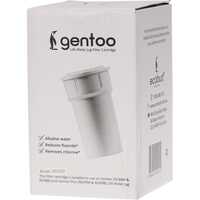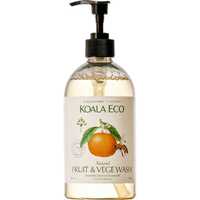While it looks great in the backyard or on the golf course, grass is not the first thing you think of when it comes to nutrition. This large family of flowering plants has some highly nutritious members, however, many of which have a long history of human consumption. As we rediscover ancient foods through the eyes of modern science, edible grasses are increasingly seen in health food shops, supermarkets, and dinner tables across the world
Let's take a closer look at edible grasses, analyse their relationship to cereals and grains, and review some of the most beneficial grasses out there. From wheat and rice to delicious lemongrass and nutritious barley grass, edible grasses can be a great addition to any diet.
What are Edible Grasses?
Grasses are a huge family of plants also known as Poaceae or Gramineae. This plant family is synonymous with lawns and pastures, but it also includes bamboos and common cereal grasses. There are around 780 genera of grasses, which makes it the fifth-largest plant family on Earth. Grasses are used for building, landscaping, and biofuel, among other applications, and they also provide us with sustenance. Edible grasses are widely accessible, very nutritious, and economically important to the survival of all human civilisations.
Edible grasses include a range of domesticated cereal crops, most of which have a long history in agriculture. These foods provide more than half of the world's dietary energy, with wheat and rice supplying 20% each. Grasses represent 70% of all crops grown, which makes them the world's primary source of carbohydrates. When they're grown for human or animal consumption, the edible seeds in grasses are harvested and sold as cereals or grains.
Some edible grasses have become popular in recent years due to their rich nutritional profile. This group includes wheatgrass, barley grass, and oat grass, which are often sold as superfoods. While these products are related to common wheat, barley, and oats respectively, they are harvested from young leaves to provide additional nutritional benefits. When grass is harvested before it starts making seeds, humans can access more nutrients and experience much richer taste sensations.
The History of Edible Grasses
Human beings have been eating grass for a very long time. Around 3 to 3.5 million years ago, our early ancestors got more than half their nutrition from grasses, which is much the same as today. This was a stark contrast to their predecessors, who survived mostly on a diet of fruit and insects. The grasses consumed back then were very different to the cereals eaten today, however, which consist mostly of wheat, rice, and corn.
Humans started eating grains roughly 75,000 years ago in western Asia, with the oldest silos built 11,000 years ago and modern cereals slowly domesticated over time. Wheatgrass can be traced to ancient Egypt over 5,000 years ago, and barley grass was considered a sacred plant in ancient China around the same time. Barley grass was also cultivated in ancient Egypt, Sumeria, and Babylonia, and both became more popular in recent decades, thanks to growing health awareness across the globe.
Grasses vs Cereals vs Grains
It's important to understand the differences between grasses, cereals, and grains. We often use these words interchangeably, but they refer to different parts of the plant or approaches to cultivation. While all cereals include grain, not all grains are a cereal. Grains also include legumes, including chickpeas, soybeans, and lentils. Based on common usage, they may also include pseudo-cereals such as chia and quinoa, which are non-grasses often used the same way as cereals.
- Grasses are a family of flowering plants, some of which are edible.
- A cereal is any grass that has been cultivated, especially for its grain.
- Grains are the small edible seeds of multiple cereals and legumes.
Nutritious and Delicious Edible Grasses
A wide array of edible grasses are consumed around the world, from common cereals to flavour enhancers and superfoods. Let's look at some of the world's most popular grasses, divided into common cereals, herbs and flavour enhancers, and nutritious superfoods:
Common cereal grasses
Common cereals are necessary for human survival. Wheat and rice are the most important crops in the world, and corn, barley, and millet also play a vital role in some cultures. As a food staple, cereals are an important source of energy, protein, carbohydrate, and fibre. They also contain a wide range of micronutrients, including magnesium, zinc, vitamin E, and some B vitamins. Whole-grain cereals are the most nutritious, as they contain the endosperm, germ, and bran for a complete profile. Processed cereals often strip the bran and germ, which are often rich in vitamins, minerals, antioxidants, and phytochemicals.
Wheat
There are two main types of wheat: common wheat or Triticum aestivum vulgare and durum wheat or Triticum turgidum durum. Wheat is high in carbohydrates, and it's also an important source of protein, fibre, minerals, and antioxidants. Wheat products include wheat germ, spelt, couscous, bulgur, and wheat starch. While wheat and wheat flour are common in a wide range of cuisines and commercial foods, the gluten content in wheat can cause problems for some people.
Rice
As one of the most important dietary carbohydrates in the world, rice is a central component of many global cuisines. There are many different types of rice, all of which can be categorised as either white rice or brown rice. White rice has less fibre and protein than brown rice, which is a whole grain equivalent that contains both the bran and germ. Rice is a gluten-free grain with high carbohydrate levels and small amounts of protein, fibre, fat, magnesium, and phosphorus.
Grasses with flavour
Many grasses are consumed for their distinct flavour profile, either as core ingredients, aromatic herbs, or flavour additives. From the bamboo shoots used in Asian cuisines to zesty lemongrass and energetic sugar cane, the following grasses are full of natural flavours:
Bamboo
Bamboo has a rich earthy taste with hints of nuttiness, which makes it ideal for stir-fries or anything that needs crunch and sweetness. Bamboo shoots can be consumed when the plant is young and soft. You need to remove the harder exterior layers to access the soft white inner core of the stalk, which needs to be boiled to remove the toxins.
Lemongrass
Lemongrass is a popular food with an amazing aroma and zesty flavour profile. It combines citrus and lemon flavours with hints of mint and ginger, making it ideal for curries, marinades, and even drinks. Lemongrass is typically used for flavouring but can be eaten whole by removing the outer stalk and consuming the inner core.
Sugar cane
Sugar cane has a sweet natural taste that goes well with mint, ginger, pepper, or salt. This yummy grass is best experienced as pure juice, but it also goes well in vegetable dishes, baked desserts, and herbal teas. You can chew the inner core of the sugar cane stalk, but swallowing isn’t recommended. Sugar cane is often refined into molasses and sweet commercial products.
Superfood grasses
While many grasses can be eaten, only some deserve the 'superfood' label. From the worldwide phenomenon of wheatgrass to the emerging popularity of barley and oat grass, these three grasses are worthy of your attention:
Wheatgrass
Wheatgrass comes from the first young leaves of the common wheat plant Triticum aestivum. It gets harvested early in its development, normally 7-10 days after sprouting. Even though wheatgrass comes from the same plant as common wheat, it offers a much denser nutritional profile. It's low in calories but high in nutrients, including vitamins C and E, iron, magnesium, and calcium.
Wheatgrass has 17 amino acids, lots of chlorophyll, and a range of antioxidants to help protect against some forms of cancer. The chlorophyll in wheatgrass is antibacterial in nature, with this plant pigment also having powerful anti-inflammatory properties. According to studies, chlorophyll may also help to reduce inflammation. While it's a wheat product, wheatgrass does not contain gluten, which makes it ideal for a gluten-free diet.
Barley grass
Barley grass has been getting more popular over recent years, thanks to its unique nutrient profile and density. This powerful grass has a very high protein content at 20-25%, including all 8 essential amino acids. It also includes lots of iron, beta-carotene, vitamins B2 and K, potassium, calcium, and zinc. While barley grass can be beneficial to anyone, it has become especially popular among vegetarians, vegans, and active people who want to supplement their diet without eating meat.
Barley grass is also rich in antioxidants, which help to fight off free radicals that damage the body. Among other things, the antioxidants in barley grass help to improve skin health and lower the risk of some cancers. Barley grass is also a great source of soluble dietary fibre, which helps to aid digestion and lowers the risk of stroke and heart disease.
Oat grass
Oat grass may not be as popular as wheatgrass or barley grass, but it also fits the 'superfood' label. Oat grass is a powerful gluten-free source of vitamins, minerals, and antioxidants, which make it a popular choice for juices and smoothies. Like other cereal grasses, it contains beta-carotene, folic acid, calcium, fibre, iron, protein, and lots of vitamins. In addition, oat grass helps to inhibit the MAO-B enzyme, which regulates dopamine levels in the brain and helps to support positive quality of life outcomes.
If you want to explore the wonderful world of edible grasses for yourself, Health Being has everything you need. From common whole-grain cereals to powerful superfood formulations, our edible grasses can give your health and wellbeing an amazing boost!


 Certified Organic
Certified Organic Vegan Friendly
Vegan Friendly  Vegetarian
Vegetarian Organic Ingredients
Organic Ingredients Dairy Free
Dairy Free Gluten Free
Gluten Free Keto Friendly
Keto Friendly
































